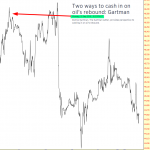US companies added 182,000 jobs last month, according to this morning’s October update of the ADP Employment Report. The gain is in line with expectations and reflects a moderate increase that suggests that the US economy continued to expand at a stable if somewhat diminished rate compared with recent history. But while today’s release implies that US business cycle risk remained low in October, there’s a worrisome trend to consider for the near-term future: the ongoing deceleration in the year-over-year growth rate.
Let’s recognize right off that the 2.11% annual gain through last month in the ADP numbers is a healthy advance… if it continues. The concern at this point, particularly in light of mixed economic numbers in recent months generally, is the slight but persistent slide in the year-over-year increase. Downside momentum is still soft on this front from month to month, but the cumulative effect is starting to take a toll.
Private-sector jobs increased 2.11% in October vs. the year-earlier level, the slowest rise since March 2014. The question is whether the rate will continue to slump in the months ahead? Recent history suggests as much, which raises the possibility that growth will remain slow for the US in the near term. That’s the current forecast via the Atlanta Fed’s GDPNow model, which projects fourth-quarter growth at a tepid 1.9% rate (seasonally adjusted annual rate) as of Nov. 2. In other words, the economy doesn’t look set to accelerate much beyond Q3’s weak 1.5% GDP rise at this point.

This slowing rate of growth may not be a sign of imminent danger. Indeed, the downshift could simply be a sign that the growth cycle has peaked. That’s hardly a radical thought for an expansion that’s currently in its sixth year, according to NBER data. That’s a relatively long run for growth—the fifth-longest, in fact, over the past century and a half.














Leave A Comment